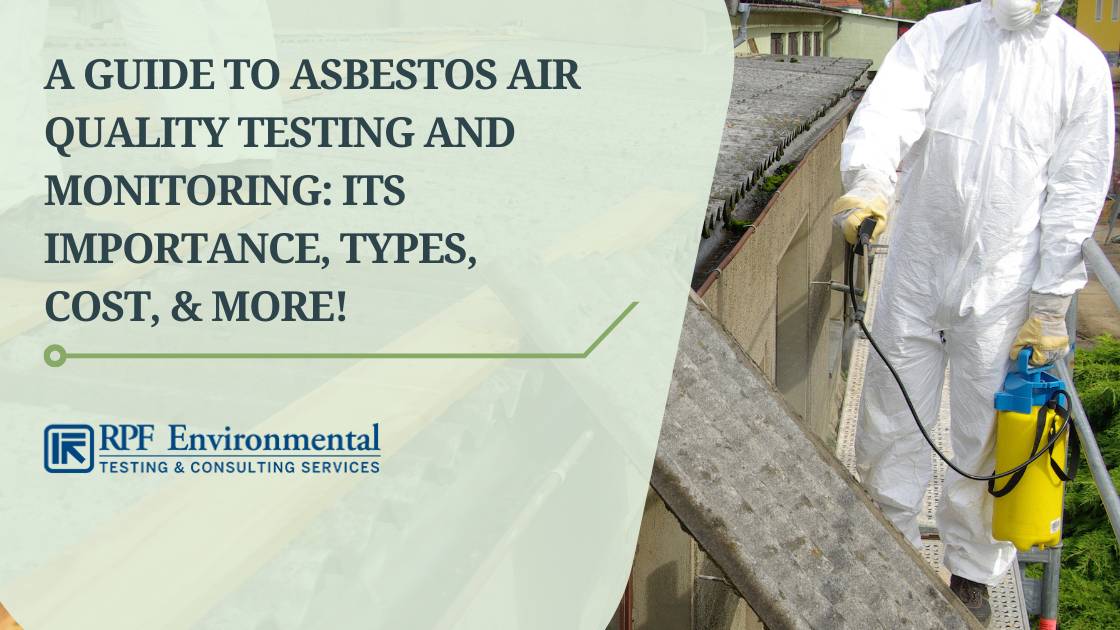 to Know About Asbestos Air Testing" width="1120" height="630" />
to Know About Asbestos Air Testing" width="1120" height="630" /> to Know About Asbestos Air Testing" width="1120" height="630" />
to Know About Asbestos Air Testing" width="1120" height="630" />
Exposure to asbestos fibers in the air can cause serious health issues when the problem is not dealt with immediately. Whether you are doing it for compliance or want to protect your family or business from potential airborne asbestos fibers after a remodeling job, this guide can help you. Keep on reading if you want to know more about asbestos air quality testing before hiring a professional to conduct one. We will discuss its importance including the common types of asbestos air quality test and monitoring procedures among others.
![]()
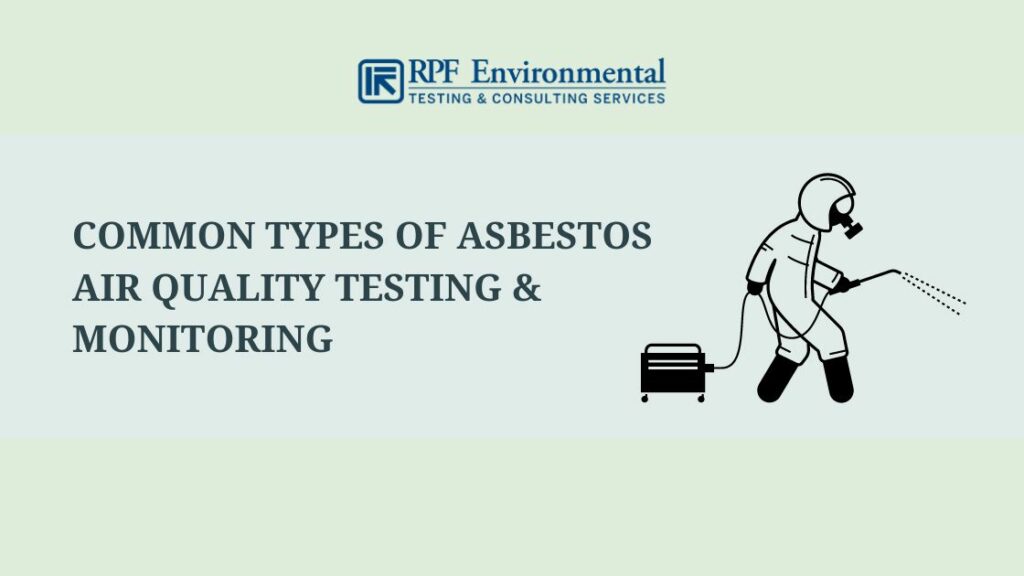
There are various strategies used for testing airborne asbestos. Below are the most common ones along with an overview of the purpose of each:
The type of asbestos-containing material, previous activities, and others will determine what test is the right one for your needs. The strategies we have discussed can only be done in specific circumstances and selecting the right one is important to ensure the reliability and accuracy of the results.
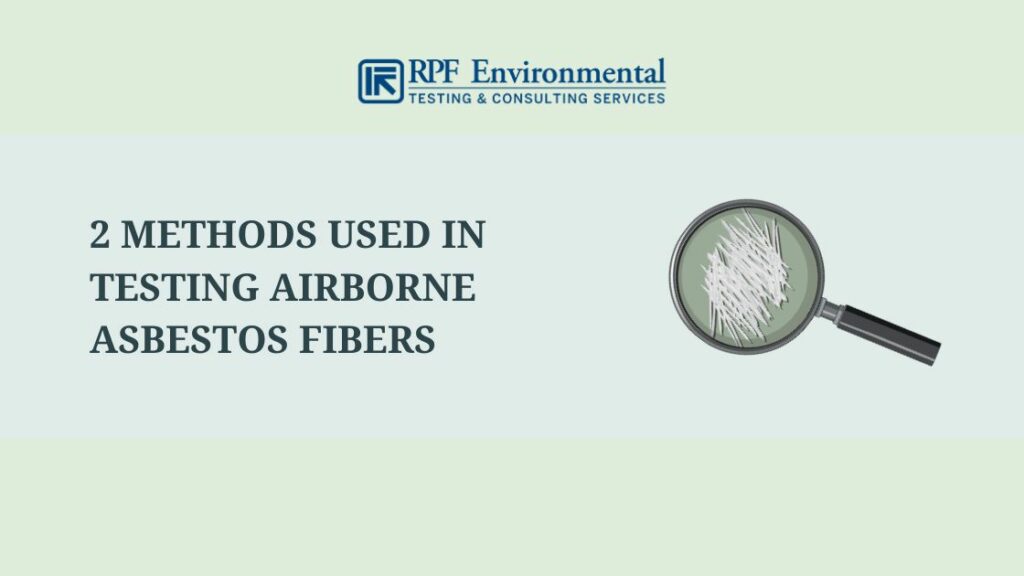
Aside from the asbestos air testing and monitoring strategies above, there are two types of methods used in testing for asbestos fibers in the air. These are Phase Contrast Microscopy (PCM) and Transmission Electron Microscopy (TEM):
On many asbestos removal projects, PCM is often selected for its speed and cost-effectiveness, while TEM is best when a high degree of confidence in the results is desired.
| Phase Contrast Microscopy (PCM) | Transmission Electron Microscopy (TEM) |
|---|---|
| A low-cost and quick method of identifying fiber concentrations in the air but can’t differentiate between asbestos and other fiber types. | Provides more accurate results as it can identify asbestos fibers and can detect even the smallest ones but takes longer than PCM. |
In addition, a more comprehensive TEM analysis is often conducted after a PCM analysis has revealed that there is a high concentration of fibers in the air. This is to confirm whether the fibers detected do contain asbestos and to determine which portion are asbestos fibers.
Below is a more detailed discussion of the differences between the two along with their pros and cons:
PCM is a more popular testing method than TEM because of the convenience it offers at a low price. However, it quantifies all types of fibers in the affected area aside from asbestos which is why it can’t provide accurate results if you want to test for asbestos only. This is why it is often used only if it is certain that you are dealing with asbestos and want to have a rough estimation of the number of fibers present in the air.
TEM uses more advanced technology to accurately determine asbestos fiber concentrations in the air along with what type of asbestos is present. Though it takes longer than PCM and is more expensive, it provides more reliable results. This method should be done especially after an asbestos abatement project before the area can be reoccupied.
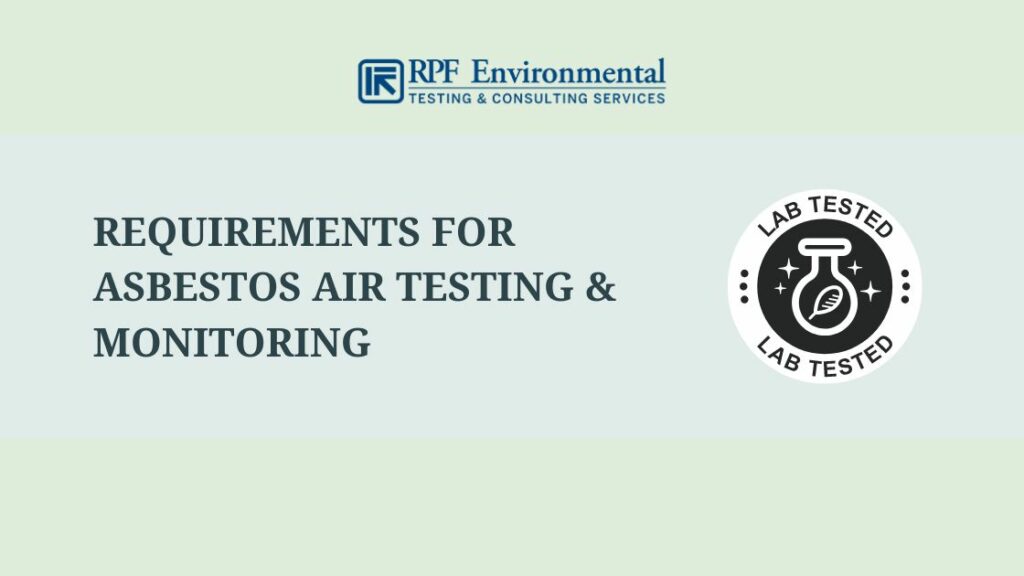
Asbestos sampling should be done pursuant to the Asbestos Hazard Emergency Response
Act (AHERA) guidelines. OSHA has also provided detailed procedures for asbestos sampling and analysis. You can read more about asbestos sampling rules in our blog about how many samples are right.
Only licensed professionals should test for asbestos such as:
Asbestos testing and inspection costs usually range from $200 to $1,000+ with more comprehensive tests costing around $1,200 to $1,500+. This will depend on many factors including the following:
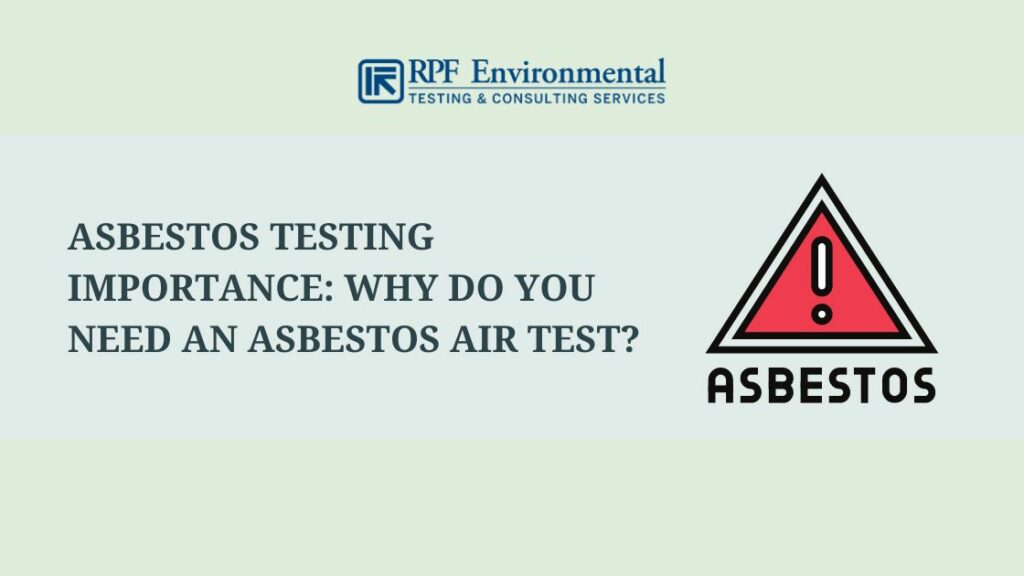 Asbestos Testing Importance: Why Do You Need an Asbestos Air Test?" width="768" height="432" />
Asbestos Testing Importance: Why Do You Need an Asbestos Air Test?" width="768" height="432" />
Are you wondering why you need to test for airborne asbestos fibers, especially if you suspect that you have asbestos-containing materials on your property? This is because asbestos is highly toxic and can cause irreversible damage to your health.
Asbestos materials that are undisturbed and in good condition do not usually pose a threat. But once they become old and start to deteriorate or are disturbed during remodeling projects, they become health hazards. So if you have recently done a home renovation/remodeling project and suspect that you have disturbed asbestos materials, contact a professional immediately for testing and remediation.
Below are the dangers of short-term and long-term exposure to airborne asbestos fibers:
Visit your physician as soon as possible if you are experiencing any of the symptoms and suspect that you have been exposed to asbestos.
Breathing in asbestos fibers can cause the fibers to accumulate in your lungs and cause serious damage which can lead to the following diseases:
Contact a licensed asbestos inspector immediately. Do not attempt to test suspected materials yourself and avoid disturbing them further. Otherwise, you will be releasing more asbestos fibers into the air. Proper asbestos air testing can help you find the most suitable solution to deal with potential hazards before they get worse.
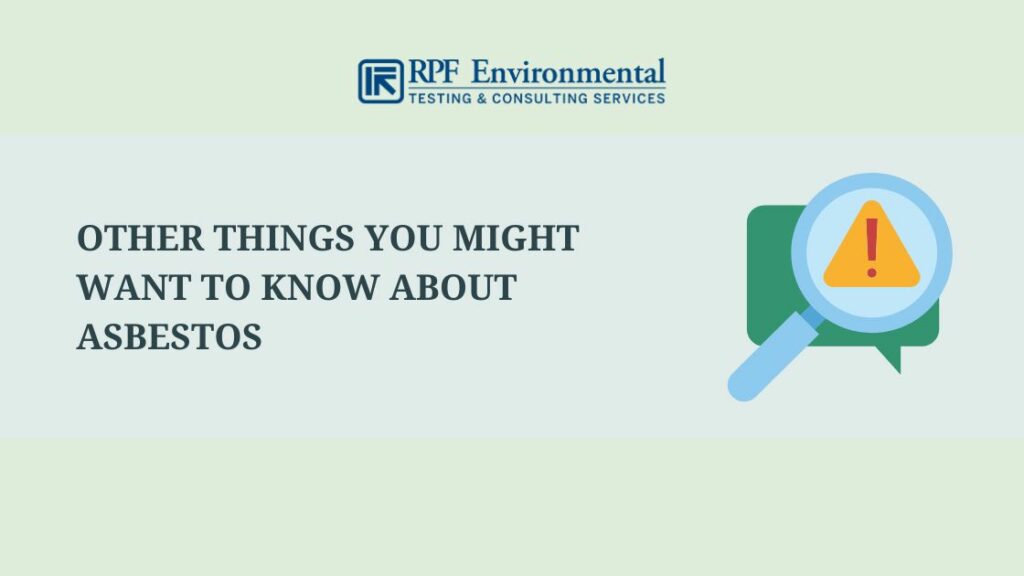 to Know About Asbestos" width="768" height="432" />
to Know About Asbestos" width="768" height="432" />
Asbestos is a naturally occurring mineral that is durable and heat-resistant which made it popular in the construction industry in the 1920s onwards. Its use declined from the 1970s to the 1980s due to its negative health impacts. This means that there is a high chance of asbestos being present in old houses built from the 1920s to the 1980s. Thus, we recommend testing the property especially if you are buying an old house.
Also, asbestos is highly regulated by the EPA and OSHA but it is still not completely banned in the US.
All of these can significantly impact your health in different ways.
Some of the common building materials where you can find asbestos include the following:
Test for asbestos in your property, especially in old buildings, if you want to ensure your safety and protect your investment. Asbestos is hazardous and can cause permanent damage to your health. You should also conduct an asbestos survey prior to renovation and demolition activities to avoid violations.
No. You can’t easily test if you have been exposed to airborne asbestos or not. Asbestos diseases can also be difficult to diagnose because their symptoms are similar to that of other respiratory diseases. Doctors will need to do multiple tests on you to identify abnormalities in your body.
What test can detect asbestos?Clinical tests for asbestos-related diseases include the following:
– Pulmonary function tests
– Chest radiographs
– Bronchoalveolar lavage (BAL)
– Blood studies
– Lung biopsy
– CT scans
– Colon cancer screening
When microscopic asbestos fibers are released into the air, they can stay airborne for days depending on various factors like room size and ventilation. They can settle within 48-72 hours given that there is minimal disturbance. But since they are very light, they can easily become airborne again and can enter your lungs.
What are the air sampling limits for asbestos?Below is an overview of the asbestos sampling limits recommended by OSHA:
Permissible Exposure Limits (PEL):
– Time Weighted Ave. : 0.1 fiber/cc
– Excursion Level (30 minutes): 1.0 fiber/cc
Recommended Sampling Rate: 0.5 to 5.0 liters/minute
Recommended Air Volumes: 25 L to 2,400 L
Asbestos air quality testing is crucial in identifying potential asbestos hazards in suspected areas. Licensed asbestos professionals can help you get accurate and reliable results to determine the best solutions on how to deal with asbestos-related issues in compliance with laws and regulations.
RPF Environmental can help guarantee asbestos-free air in your home or workplace through our affordable and reliable asbestos testing services. We have been serving thousands of satisfied clients in the New England region and across the U.S. for years. Contact us now!